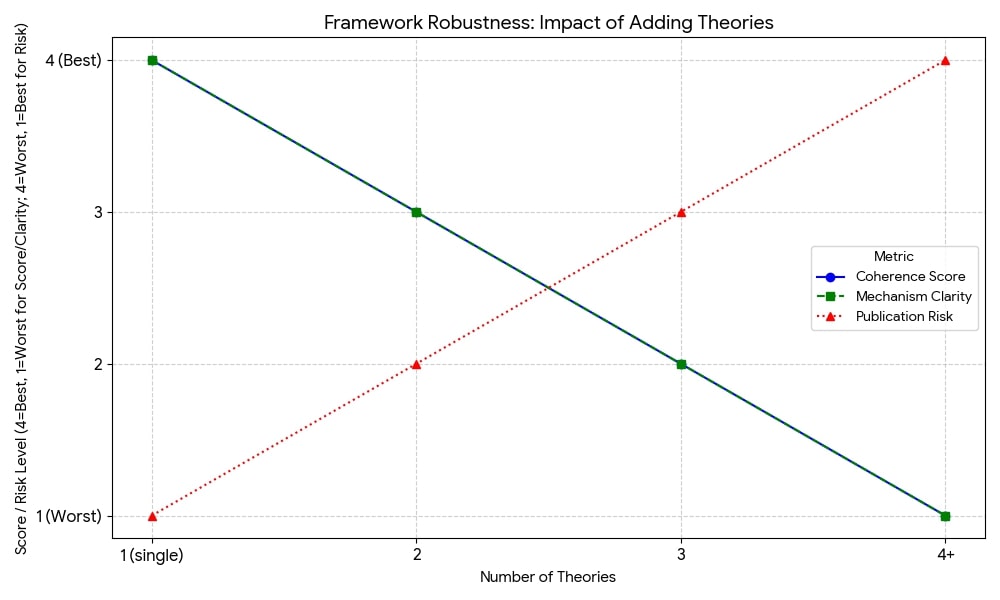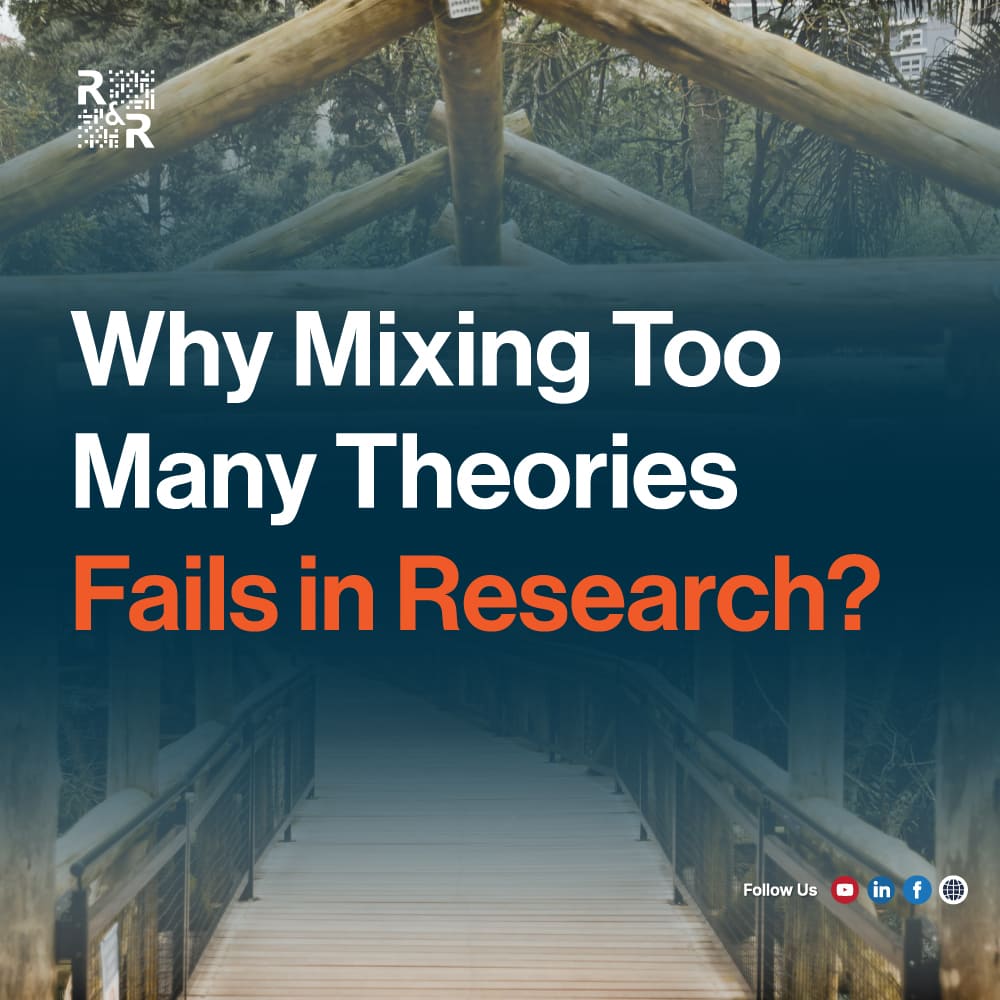When researchers layer too many theories, they often think “more breadth = more rigor.” But the opposite often occurs. Below are four critical, but commonly overlooked, issues that weaken research—even when the intent is “comprehensive.”
Common but Hidden Pitfalls
Conceptual Conflict & Epistemological Clash
Every theory carries assumptions about knowledge (epistemology). When researchers mix theories from different paradigms (e.g. positivist vs interpretivist), constructs may contradict one another. Without reconciling the underlying logic, your framework collapses.
For example, combining a strict behaviorist theory (cause → effect) with a constructivist theory (meaning co-constructed) invites conflict in measurement and interpretation.
Vague or Missing Causal Mechanisms
Multiple theories can provide constructs, but rarely articulate how those constructs interrelate across frameworks. Without clear causal links, your model becomes descriptive—not explanatory.
Superficial Stacking Instead of Integration
Many “integrated” frameworks simply stack theories together (Theory A + Theory B + Theory C) without mapping intersections or mediators. True integration demands you find shared constructs, boundaries, or bridging logic.
Reviewer Red Flags & Practical Rejection
Experienced reviewers spot “framework confusion” immediately. Overloaded models tend to indicate weak theoretical mastery — a common cause of desk rejections in social sciences and management journals.
Best Practices for Theory Selection & Integration
To avoid confusion, follow these expert steps:
- Choose a Core Anchor Theory
- Select one theory as your main lens. This becomes your guiding structure. Other theories should supplement—not compete.
- Use Supporting Theories Sparingly
- Limit to one or two auxiliary theories. Use them only when they truly deepen explanation, not just to increase references.
- Map Overlaps & Build Bridging Mechanisms
- Create a conceptual map showing shared constructs, mediators, or boundary conditions. This helps merge theories logically.
- Iterative Testing & Fit Assessment
- After building your model, test it against pilot data. Revise if parts don’t align. Quantitative and qualitative data integration methods can help.
Visualizing Framework Robustness
Below is a simple chart illustrating how adding theories affects coherence, mechanism clarity, and publication risk.
| Descriptive Value | Coherence/Clarity Scale | Publication Risk Scale |
| High / Clear | 4 | N/A |
| Medium-High / Mostly Clear | 3 | N/A |
| Medium / Partially Vague | 2 | N/A |
| Low / Very Vague | 1 | N/A |
| Low Risk | N/A | 1 |
| Moderate Risk | N/A | 2 |
| High Risk | N/A | 3 |
| Very High Risk | N/A | 4 |
The chart clearly shows the contrasting trends:
- Coherence Score and Mechanism Clarity both decrease as the number of theories increases.
- Publication Risk increases as the number of theories increases.

Figure: Impact of adding theories
Expert Evidence & References
- Integration in mixed methods research requires design-level, methods-level, and interpretation-level strategies.
- Poor integration leads to “dissolution” of method strengths into a blurred model.
- Integrative capacity in research teams is vital to manage complexity when combining perspectives.
Conclusion & Call to Action
Mixing theories is tempting, but dangerous when done without integration. Focus on clarity, choose your anchors carefully, and build bridges—not piles.
Question for you
Which theory have you tried combining in your research—and what confusion did it cause? Please share in the comments below to spark discussion.
Want research service from experts of Research and Report? Please contact us.

